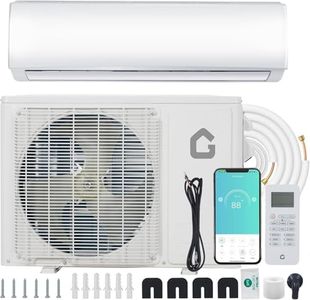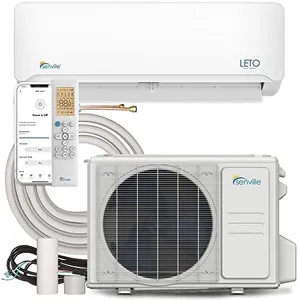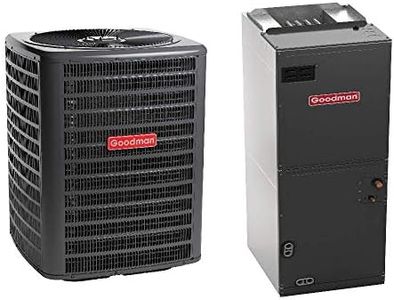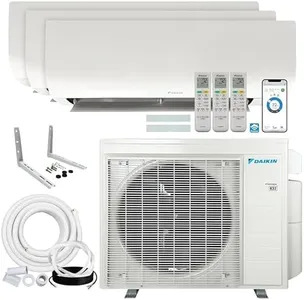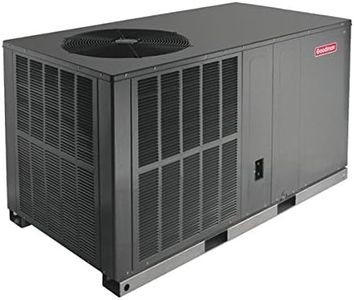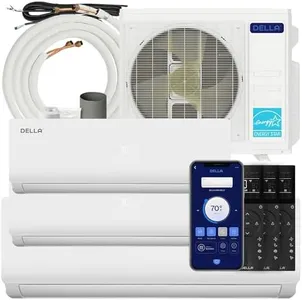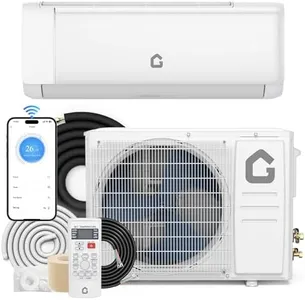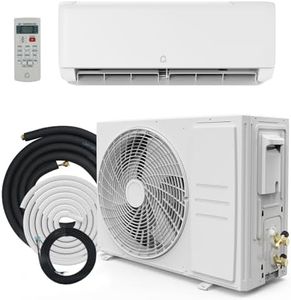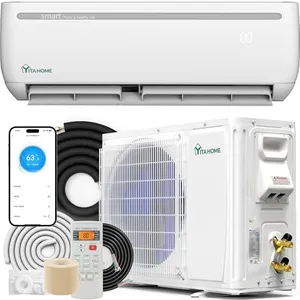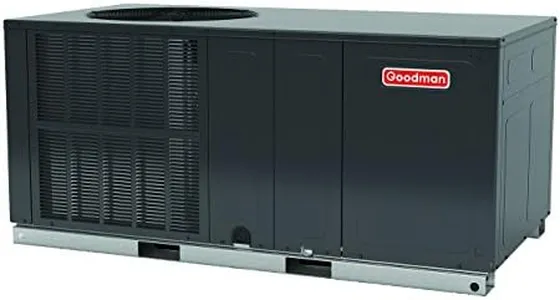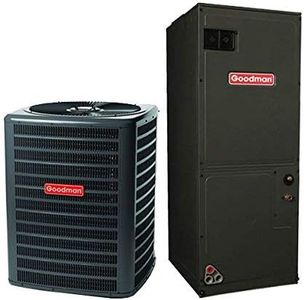10 Best Heat Pumps 2025 in the United States
Our technology thoroughly searches through the online shopping world, reviewing hundreds of sites. We then process and analyze this information, updating in real-time to bring you the latest top-rated products. This way, you always get the best and most current options available.

Our Top Picks
Winner
Senville LETO Series Mini Split Air Conditioner Heat Pump, 18000 BTU 208/230V, Inverter, Works with Alexa, SEER2 19, 1.5 Ton, White
Most important from
7892 reviews
The Senville LETO Series Mini Split Heat Pump is a solid choice if you want a versatile and energy-efficient system for both cooling and heating moderately sized spaces (up to about 1000 square feet). With an 18,000 BTU capacity and a 1.5-ton rating, it handles airflow well for medium rooms or small commercial areas. Its SEER2 rating of 19 means it’s quite energy efficient, which helps lower electricity bills compared to many traditional units. It also has a low noise level of 30 decibels, so it runs quietly enough for bedrooms or living spaces without being distracting.
This model uses inverter technology for smoother temperature control and includes Alexa compatibility, allowing easy voice or app control — a convenient feature if you enjoy smart home integration. The heat pump functions down to about 5°F (-15°C), which covers most mild to moderately cold climates, though it might struggle in very cold areas. It offers multi-function modes: cooling, heating, dehumidifying, and fan, making it a year-round comfort solution.
Installation comes with a kit but requires professional setup, which adds to the cost and effort. The unit comes with a strong 5-year warranty on the compressor and parts, giving peace of mind about reliability. If you want a modern, quiet heat pump with smart features and good efficiency for moderate climate zones, this Senville model fits well. However, if you live in very cold regions or want detailed info on defrost performance, you might want to check further or consider alternatives.
Most important from
7892 reviews
Goodman 5 TON 14.5 SEER2 Multi-Position R-32 Heat Pump System with air handler (GLZS4BA6010 condenser and AMST60DU1300 air handler)
Most important from
8 reviews
The Goodman 5 Ton 14.5 SEER2 Multi-Position Heat Pump System is a solid choice for homeowners needing reliable heating and cooling with a decent energy efficiency rating. Its capacity of 5 tons (58,000 BTU/h) makes it suitable for medium to large homes. The SEER rating of 14.5 meets Energy Star standards, which indicates good energy efficiency, although it’s not the highest available on the market. This means you can expect reasonable energy bills but not the absolute lowest. The system uses the newer R-32 refrigerant, which is more environmentally friendly than older types. Noise level is around 75 decibels, which is moderate; it won't be completely silent but shouldn’t be overly disruptive either.
The air handler’s multi-position design offers flexible installation options (upflow, horizontal left or right), which is helpful in fitting various home layouts. It also features a reliable 9-speed ECM blower motor for efficient airflow and comfort control. However, if you live in a colder climate, you’ll need to purchase a heat kit separately to ensure adequate heating during winter. The system comes with a 10-year parts warranty, which adds peace of mind. One minor downside is that accessories like thermostats and sensors are not included and must be bought separately.
This Goodman heat pump system is well suited for homeowners looking for an efficient, well-built unit with installation flexibility and moderate noise levels, but those in very cold areas should consider the extra cost of a heat kit.
Most important from
8 reviews
Goodman 2.5 TON 14.3 SEER2 Heat Pump System with Air Handler R-410A GSZM403010 AMST30BU1400
The Goodman 2.5 Ton 14.3 SEER2 Heat Pump System with Air Handler is a solid choice for homeowners seeking a reliable and efficient heating and cooling solution, especially in moderate climates. With a cooling capacity of 2.5 tons and a SEER rating of 14.3, it offers decent energy efficiency that can help lower electricity bills compared to older systems. It's designed as a split system using the environmentally friendly R-410A refrigerant, which is common in modern units. The included air handler features corrosion-resistant materials and grooved tubing, improving heat transfer and durability.
One notable strength is the 10-year limited parts warranty, which adds peace of mind about its long-term reliability. The system’s scroll compressor and factory-installed filter drier promote smooth and clean operation. However, if you live in a very cold climate, you’ll likely need to add a separate heat kit since this unit is better suited for areas without severe winters.
This Goodman heat pump is a practical, energy-efficient option for those wanting to replace natural gas or propane heating with an electric alternative that balances performance and cost.
Buying Guide for the Best Heat Pumps
Choosing the right heat pump for your home is crucial for ensuring efficient heating and cooling, as well as for maintaining comfort throughout the year. Heat pumps are versatile systems that can both heat and cool your home by transferring heat from one place to another. To make an informed decision, you need to understand the key specifications and how they relate to your specific needs and circumstances.FAQ
Most Popular Categories Right Now
